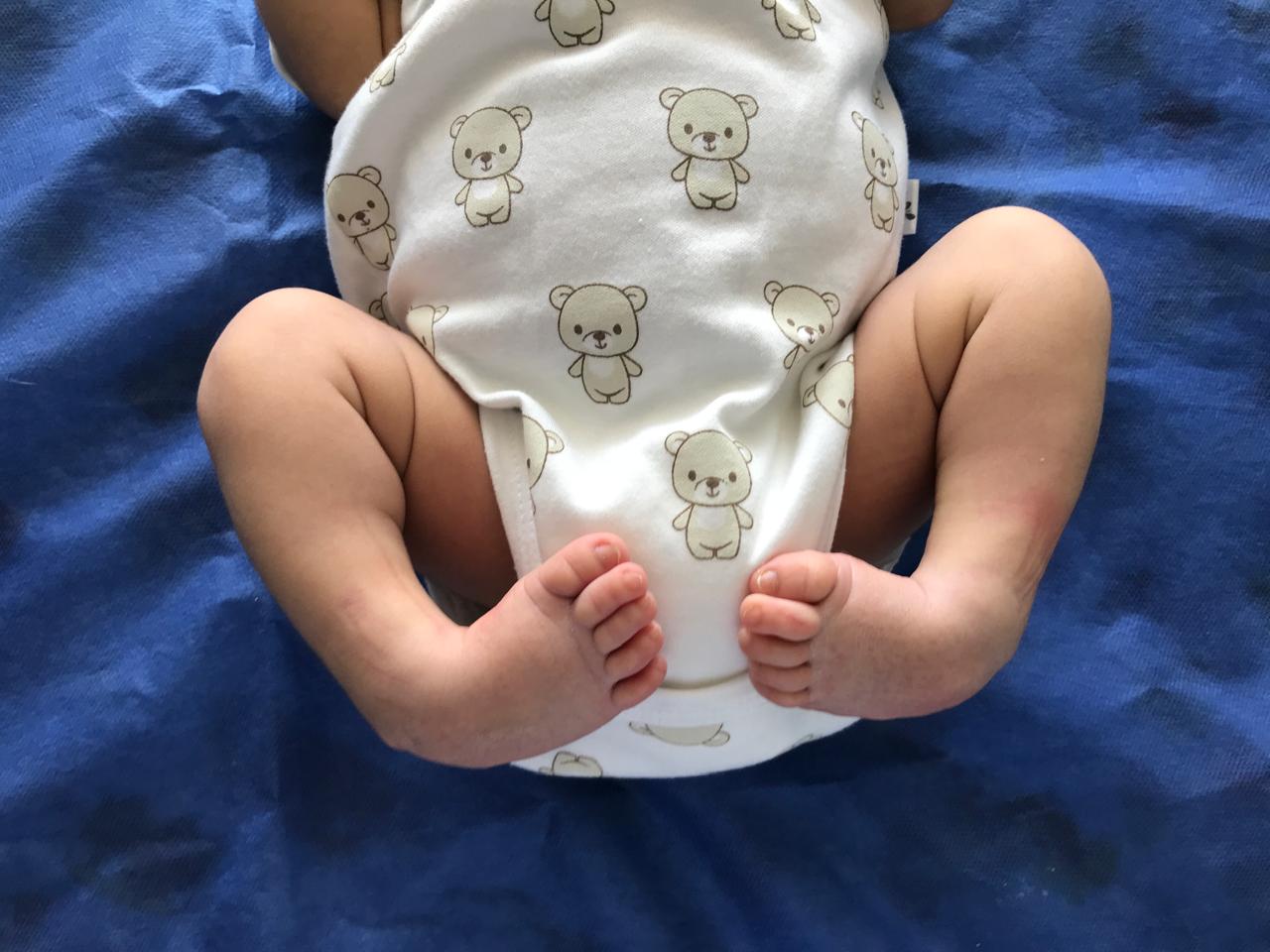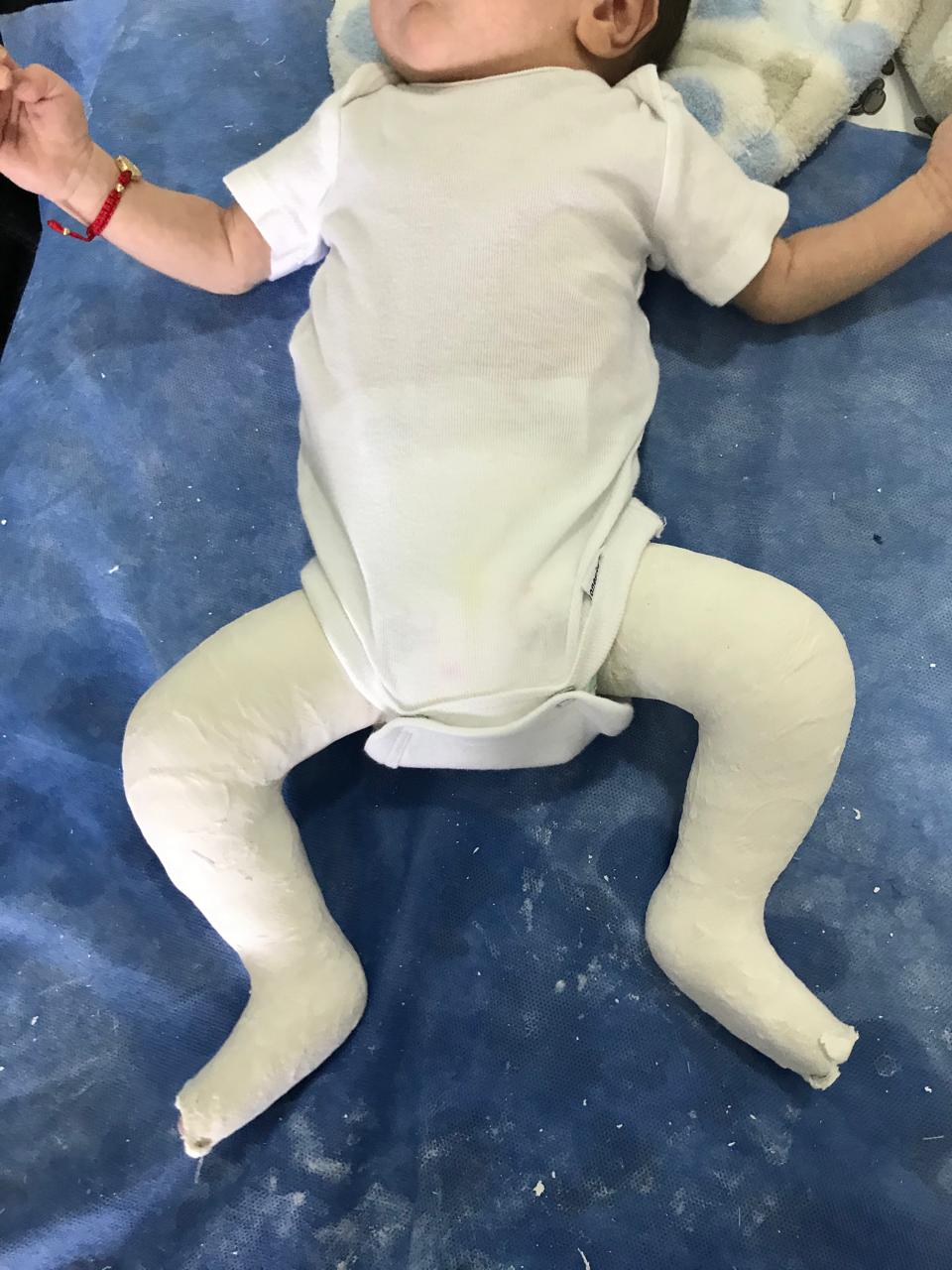Babies born with clubfoot can be cured and lead normal lives.

Until less than ten years ago, babies born with clubfoot in Colombia had to undergo extensive, painful surgeries with permanent consequences : stiff feet, limited mobility, and the risk of early arthritis. With the implementation of the Ponseti method, this reality changed completely.

This condition affects approximately 1 in every 1,000 live births worldwide. Photo: Courtesy.
Today, children with congenital clubfoot (foot club or foot chapín) can be corrected painlessly, with adequate function and full mobility, thanks to a safe and highly effective procedure that has been applied in the country for the last eight years , to give a normal life to those born with congenital clubfoot, a malformation (one or both feet point downwards and turn inwards), which affects approximately 1 in every 1,000 live births in the world.
Thus, according to the National Clubfoot Treatment Program with the Ponseti Method, led by the Colombian Society of Orthopedics and Traumatology, since 2018, 5,832 children in Colombia have been cured without surgery, thanks to the adoption of this technique that revolutionized pediatric orthopedics worldwide.
Revolution without a scalpel The method, created by Spanish physician Ignacio V. Ponseti at the University of Iowa in the late 1940s, consists of gentle foot manipulation, progressive cast application, and, in most cases, minor outpatient surgery on the Achilles tendon. This initial treatment can last three to four months, depending on the patient's condition. Subsequently, the child must wear a night splint—a device similar to a pair of shoes held together by a bar—until the age of five to ensure the correction is maintained.
The procedure's success rate exceeds 90 percent when performed correctly, making it the world standard for clubfoot treatment.

The method was created by the Spanish physician Ignacio V. Ponseti at the University of Iowa. Photo: Courtesy.
“This approach to the malformation changes the child's life and also the family dynamic. Parents who are distressed upon receiving the diagnosis discover that invasive surgery is not required and that the prognosis is excellent. Children can lead completely normal lives,” says Luis José Céspedes, a pediatric orthopedist and specialist in the Ponseti method at the Foscal Clinic in Bucaramanga.
Network in Colombia Currently, 20 Ponseti clinics operate in hospitals and specialized centers in Colombian cities such as Bogotá, Cali, Bucaramanga, Tunja, Barranquilla, Popayán, and Ibagué. There, hundreds of families each year access this treatment, which avoids complex surgeries and ensures early correction of a condition that "affects three babies every day in the country," according to Céspedes.
In this regard, pediatric orthopedist Astrid Medina, head of the Ponseti Clinic of the Cardioinfantil Foundation, explains: “ In Colombia, there is a network of clinics in major cities where trained and certified orthopedists guarantee the correct application of the method. Furthermore, thanks to the Colombian Society of Pediatric Orthopedics and Rotary International, patients have free access to splints that are loaned and changed as the child grows. This has allowed for appropriate, safe treatment with results that last over time.”
To offer the Ponseti Method, the first thing that must be achieved is the institutional will in the clinics to create the space and train all the medical staff who will carry out the treatment and follow-up:
“ Foscal saw the need to create the Ponseti Clinic, since 80 percent of its patients are in the contributory system, and a quarter come from rural areas or remote municipalities (Santander, Magdalena Medio, Sur de Bolívar, and Arauca), where this type of specialized care doesn't exist. They have been able to access treatment without economic or geographic barriers. In just one year of having the Ponseti Clinic in our clinic, we have already changed the lives of 80 children.”
On the other hand, specialists emphasize that early detection of the malformation is very important, so collaborative work between the obstetrics department and pediatric orthopedists at the institutions is key to starting treatment as soon as the baby is born. This is because prenatal ultrasounds, between weeks 18 and 24, can be used to identify the malformation in a timely manner.
“Mothers who have considered abortion when they learn of their prenatal diagnosis change their minds when they are assured that their baby will be fine, that they can have a normal life and even become an athlete—everything changes ,” says Céspedes.
However, experts say, despite being completely treatable, in some regions of Colombia it is still diagnosed late, resulting in adults suffering from after-effects that could have been avoided.
eltiempo





